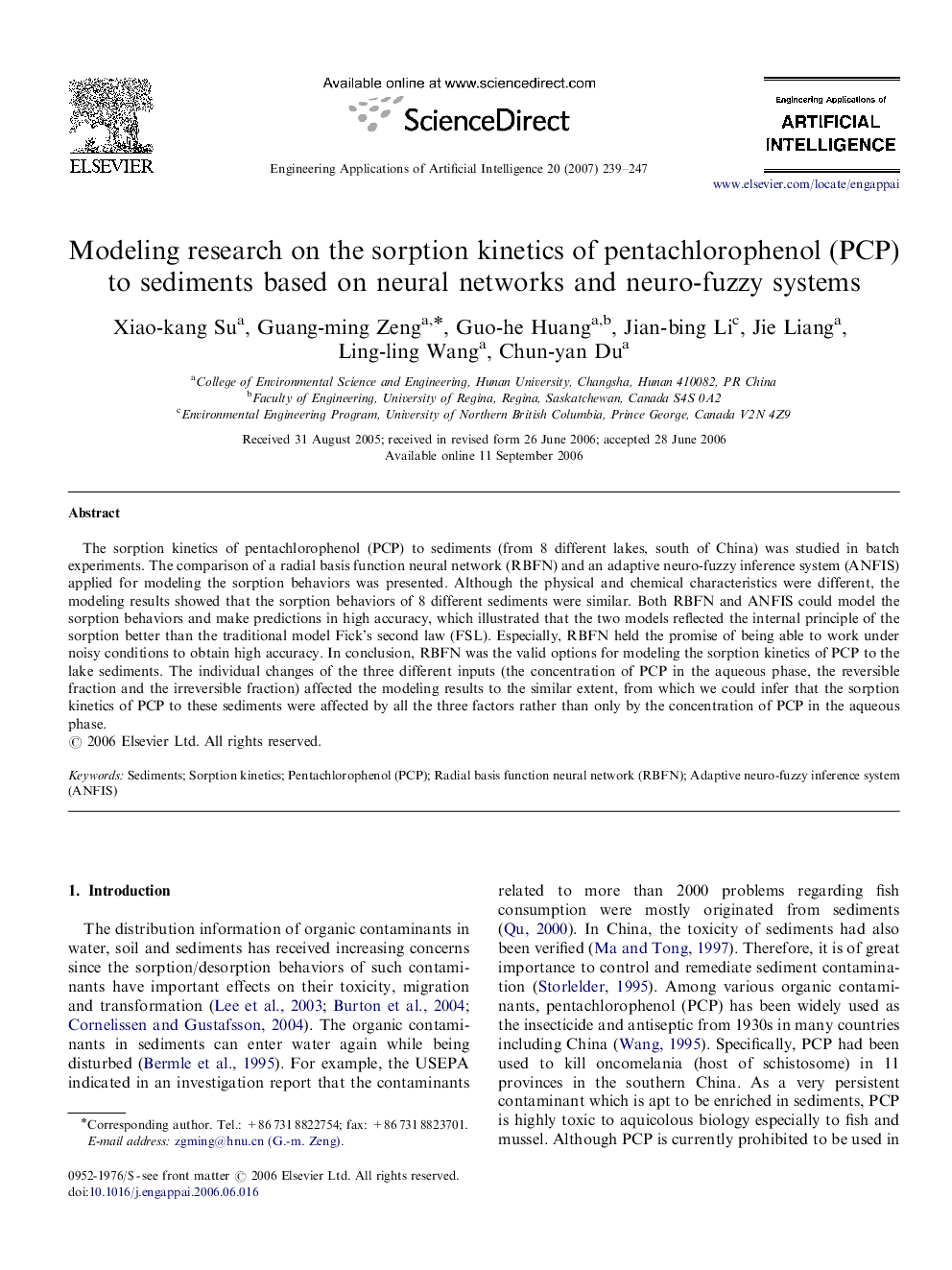| Article ID | Journal | Published Year | Pages | File Type |
|---|---|---|---|---|
| 381751 | Engineering Applications of Artificial Intelligence | 2007 | 9 Pages |
The sorption kinetics of pentachlorophenol (PCP) to sediments (from 8 different lakes, south of China) was studied in batch experiments. The comparison of a radial basis function neural network (RBFN) and an adaptive neuro-fuzzy inference system (ANFIS) applied for modeling the sorption behaviors was presented. Although the physical and chemical characteristics were different, the modeling results showed that the sorption behaviors of 8 different sediments were similar. Both RBFN and ANFIS could model the sorption behaviors and make predictions in high accuracy, which illustrated that the two models reflected the internal principle of the sorption better than the traditional model Fick's second law (FSL). Especially, RBFN held the promise of being able to work under noisy conditions to obtain high accuracy. In conclusion, RBFN was the valid options for modeling the sorption kinetics of PCP to the lake sediments. The individual changes of the three different inputs (the concentration of PCP in the aqueous phase, the reversible fraction and the irreversible fraction) affected the modeling results to the similar extent, from which we could infer that the sorption kinetics of PCP to these sediments were affected by all the three factors rather than only by the concentration of PCP in the aqueous phase.
